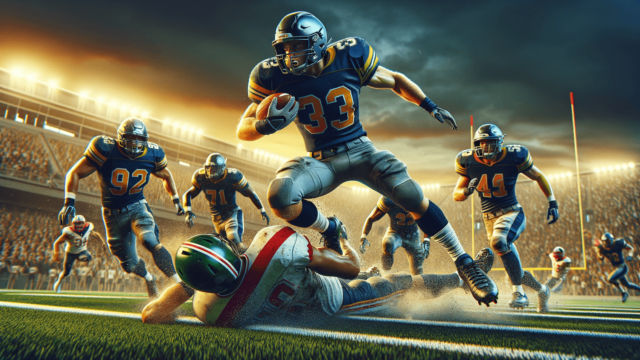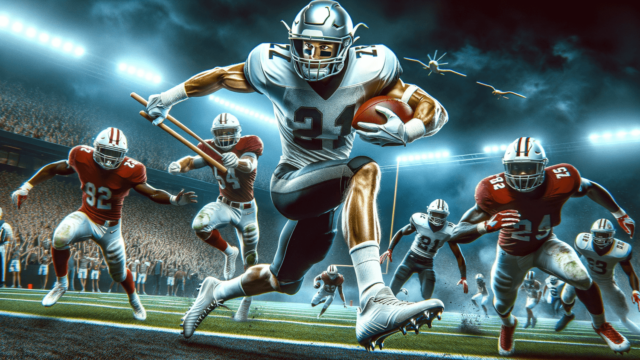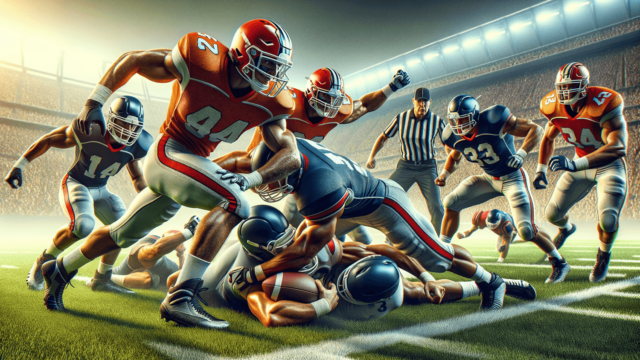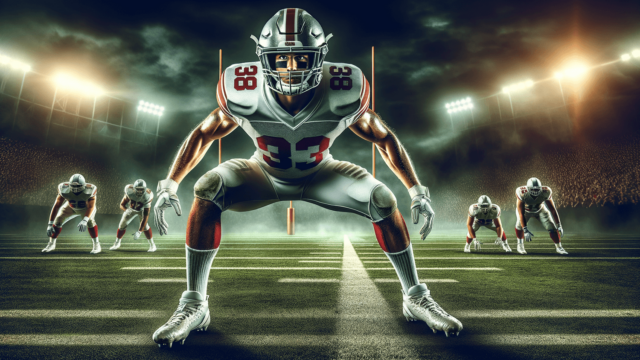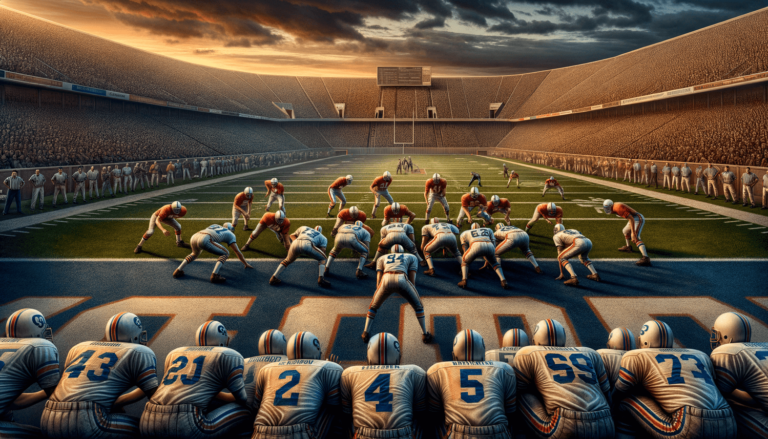
COMB in football refers to ‘Combined’, a statistical term used to count the total number of tackles made by a player, which includes both solo tackles and assisted tackles. This metric is commonly used to evaluate defensive player performance.
Understanding COMB in Football
COMB is an abbreviation for ‘Combined’ and is a key statistical term used in football to measure a player’s tackling performance. When analyzing and evaluating defensive players, COMB takes into account both the solo tackles and the assisted tackles a player makes over the course of a game or a season.
The Components of COMB
Solo Tackles
A solo tackle occurs when a defensive player singlehandedly brings down the ball carrier, stopping their forward progress and ending the play. This type of tackle showcases a player’s ability to read the play, react quickly, and demonstrate physical and technical prowess in stopping an opponent.
Assisted Tackles
An assisted tackle happens when more than one defensive player contributes to bringing down the ball carrier. This usually occurs in cases where the ball carrier is particularly tough to bring down or when the defense is executing a coordinated effort to stop the play. Assisted tackles highlight a player’s teamwork skills and situational awareness, as well as their ability to stay involved in the play until it concludes.
Evaluating Players Using COMB
Combining the counts of solo tackles and assisted tackles to form the COMB metric allows coaches, analysts, and fans to better evaluate a player’s overall tackling performance. A high COMB count indicates a player’s solid contribution to the defense, as they are consistently involved in stopping the opposition’s plays and limiting their yardage gains.
Importance of COMB in Football
While not the only metric to consider, COMB is a valuable and informative statistic that plays a crucial role in the evaluation of defensive players. Studying and comparing COMB counts can help coaches and team management make critical decisions regarding player assessment, roster-building, and game strategy, ultimately leading to a more effective and successful defensive unit on the field.
Additional COMB Context
It’s important to understand that COMB doesn’t perfectly represent a player’s overall defensive prowess. The metric is most relevant for defensive positions that are frequently involved in tackles, such as linebackers, safeties, and cornerbacks. Players in other defensive roles, such as linemen, may contribute significantly to the defense in other ways, such as by generating pressure on the quarterback or disrupting plays in the backfield. Therefore, while COMB is a very useful stat to help gauge a player’s tackling ability, it should be considered alongside other relevant statistics for a comprehensive understanding of a player’s overall performance and impact.
Comparing COMB Across Positions
It is also vital to recognize that COMB counts may vary substantially across different defensive positions. Comparing the COMB count of a linebacker to that of a defensive lineman, for instance, may not provide much meaningful insight, as these positions have differing responsibilities on the field and thus may encounter varying tackling opportunities.
COMB and Individual Game Situations
While it’s crucial to examine a player’s overall COMB count over a season, it can also be helpful to analyze specific game situations to evaluate a player’s skill set and situational awareness. For example, if a player consistently has high COMB counts in games against high-powered offenses or in crucial late-game situations, this may indicate a player who is able to step up and make critical plays when needed most. Providing such context to COMB counts can further enhance their value as a metric for player evaluation.
COMB and Other Metrics
To gain a comprehensive understanding of a defensive player’s skill set and effectiveness, it’s essential to consider COMB alongside other pertinent statistics. These might include interceptions, pass deflections, sacks, and forced fumbles. As with COMB, evaluating these statistics in various game situations can provide additional context, further illustrating a player’s strengths and shortcomings. In order to build a well-rounded and effective defense, looking at COMB in conjunction with these other metrics becomes crucial.
Frequently Asked Questions
After reading about the COMB metric in football, here are some common questions that may arise to further expand your understanding of this important stat:
What defensive position players usually have the highest COMB counts?
Linebackers typically have the highest COMB counts due to their central position on the field and their direct involvement in tackling both run and pass plays. Additionally, safeties and cornerbacks may also have high COMB counts depending on their specific responsibilities within a team’s defensive scheme.
Can COMB be used to evaluate college football players for the NFL Draft?
Yes, COMB can be utilized to assess college football players’ tackling performance, helping NFL teams make informed decisions during the draft process. However, like with professional players, COMB should be considered alongside other relevant stats, as well as factors like physical attributes, game film, and character assessments.
How do I calculate the COMB count for a player?
To calculate a player’s COMB count, simply add their solo tackles and assisted tackles for any chosen period, such as a game, a season, or a career. This will provide you with their total combined tackles, helping to evaluate their tackling performance.
What other defensive metrics should I consider alongside COMB?
When assessing a player’s overall defensive performance, other important metrics to consider include interceptions, pass deflections, sacks, forced fumbles, and tackles for loss. These stats provide valuable context and insight into a player’s various skills and abilities on the field.
Do offensive players have any equivalent to COMB?
Offensive players do not have a direct parallel to COMB, as the statistic is specifically designed to evaluate defensive tackling performance. However, offensive players have other statistics that can be used to measure their performance, such as yardage gained, receptions, touchdowns, and various efficiency ratings.
Featured Posts
- No pillar pages found.

